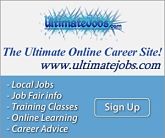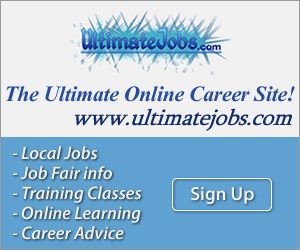JobSeeker Login
JobSeeker Menu
Latest News
-
Cannabis Delivery Company to Partner with Former Lion Calvin Johnson in Michigan
( 03/18/2021 ) -
How Long Does It Take To Grow Weed?
( 03/16/2021 ) -
Lansing pot shop gifts Everett High School senior with full-ride scholarship to MSU
( 02/05/2021 ) -
Cannabis Conference Returns to Las Vegas, Announces 2021 Advisory Board
( 02/05/2021 ) -
Michigan’s first certified organic cannabis company opens shop in Ann Arbor, MI
( 02/03/2021 )
Upcoming Events
-
No Event found!
| Article Listing | Search Articles | More Articles in Cover Letter | More Articles by |
5 Cover Letter Tips |
| by - 04/16/2021 |
| "5 Cover Letter Tips You Can Use A.S.A.P." |
| 5 Cover Letter Tips You Can Use A.S.A.P. Introduction This article will go over simple strategies you can use to create a powerful (and succinct) cover letter. Jobseekers frequently wonder about just how to structure this document. Is it separate from the resume? Do I really have to go through the process of creating an entirely new one for every job I apply to? We’ll dispel some of these myths, keep things simple, and hopefully get you well on your way to landing more interviews. Address it to a Person Whenever Possible While you can always start a cover letter with “Dear Sir/Dear Madam” this should ONLY be used as a last resort. I can’t stress enough how much of a difference addressing the cover letter to a real person makes when submitting to jobs. Not only does it leap out amongst a sea of anonymous submissions, it sends a clear message that you’re willing to go above and beyond for this opportunity. Check the job posting carefully to see if a hiring agent or similar is listed. Check the employer’s website. If you’re submitting through a connection who works at the company, ask him or her to obtain this information. The extra time you spend here can pay off exponentially in the form of more interviews. Understand a Cover Letter’s Function The sole purpose of a cover letter is to pique interest in reading your resume. Don’t make the mistake of inserting skills and details that can’t be easily followed up in the resume. Instead, think in terms of creating a “teaser”, a very brief introduction that communicates the position you’re applying for, contains a few relevant skills and accomplishments PULLED DIRECTLY FROM YOUR RESUME, and promises a follow-up within a stated period of time. Utilizing this approach is the best way to prevent confusion on the part of recruiters and hiring agents, who often scan hundreds of resumes for a particular position. Open Strong Start the cover letter with a brief paragraph that quickly communicates the position you’re applying for as well as in-demand skills. For example, a candidate for a Senior Sales Representative position might have an opening paragraph that looks like this: As a versatile professional who has forged global customer relationships, capitalized on new market opportunities, and delivered exceptional service and support, I am now seeking the opportunity to join a company such as yours in a Senior Sales Representative capacity. Possessing honed skills in establishing channel partnerships, executing promotional campaigns, and capitalizing on extensive industry contacts, combined with a passion for expanding staff capabilities through hands-on training and mentoring, I am confident in my abilities to excel as a member of your organization. *Quick Tip: Play up those skills which are mentioned frequently in the job posting (and which you possess). This immediately shows that it’s not a “blind” submission while underlining your suitability for the job. Include 3-4 Career Highlights The best way to structure a resume’s work history is to separate unique responsibilities (in paragraph form) from key accomplishments (in bullets) for every major position you’ve held. Why does this matter when constructing a cover letter? Because this is where you can reap some significant side benefits of using that approach: After the opening paragraph, include 3-4 key accomplishment bullets taken directly from your resume. Again, review the job posting to better identify the MOST RELEVANT bullets to include. For example, a Senior Sales Representative candidate might have a bullet that looks like this: • Exceeded quarterly sales quotas by 75% for INSERT COMPANY NAME through targeting small-to-medium enterprise customers and offering highly competitive pricing. Including a few career highlights makes an immediate impact in terms of presentation and content…and that’s exactly what you want out of a cover letter. Promise to Follow-Up Clearly setting a timeframe with regards to following up, and then actually doing so, is something many job seekers neglect to do. Truth is, following up can mean the difference between your submission getting lost in the shuffle and an interview. Here’s an example of an effective cover letter closing paragraph: Please accept this letter and enclosed resume as an introduction to my skills and background. For a more detailed presentation of my offerings and how I can best benefit your organization, feel free to contact me at your earliest convenience to schedule a conference. I’ll also follow up with you in 2 weeks’ time regarding my candidacy. Thank you in advance for your consideration and I look forward to our conversation. |









